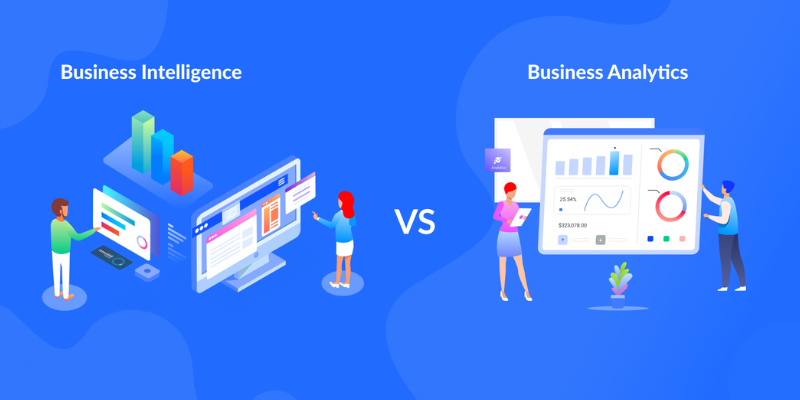
Two terms often emerge in data-driven decision-making: Business Intelligence (BI) and Business Analytics (BA). While both are essential for extracting insights from data, they serve distinct purposes. Understanding the difference between BI and BA is crucial for organizations that leverage data effectively. This blog will delve into the nuances of BI and BA, highlighting their key differences and how they contribute to organizational success.
Exploring Business Analytics (BA)
In contrast, Business Analytics (BA) encompasses a broader scope, integrating statistical analysis, predictive modelling, and machine learning techniques to forecast future trends and outcomes. BA goes beyond descriptive analytics offered by BI, delving into predictive and prescriptive analytics to anticipate future scenarios and recommend actions. By leveraging advanced analytical methods, BA helps organizations uncover hidden insights, identify opportunities, and mitigate risks. It empowers businesses to optimize processes, enhance performance, and gain a competitive edge in the market. For individuals looking to specialize in this field, pursuing an MBA Business Analytics can provide the necessary skills and knowledge to excel in roles that require advanced data analysis and decision-making capabilities.
Understanding Business Intelligence (BI)
Business Intelligence (BI) primarily analyses past and present data to gain insights into business operations. It involves collecting, storing, and analyzing historical data from various sources to generate reports, dashboards, and visualizations. BI tools help organizations monitor key performance indicators (KPIs), track trends, and identify patterns to support strategic decision-making. By providing a comprehensive view of business performance, BI enables executives and stakeholders to assess the effectiveness of existing strategies and make informed decisions.
Key Differences between BI and BA
1. Focus
BI focuses on reporting historical and current data, providing insights into past and present performance. In contrast, BA emphasizes predictive and prescriptive analysis, enabling organizations to anticipate future trends and make proactive decisions.
2. Scope
BI typically deals with structured data and standard reporting formats, while BA analyses structured and unstructured data using advanced analytical techniques. Pursuing an MBA in Business Analytics in Chennai can equip individuals with specialized skills to thrive in this data-driven landscape.
3. Purpose
The primary purpose of BI is to provide actionable insights for operational decision-making and performance monitoring. Conversely, BA aims to drive strategic decision-making by forecasting trends, identifying opportunities, and optimizing business processes.
4. Tools and Techniques
BI tools primarily include reporting and dashboarding software, whereas BA utilizes statistical analysis tools, predictive modelling software, and machine learning algorithms.
Grasping the disparity between Business Intelligence and Business Analytics is vital for organizations striving to leverage data effectively. While BI aids in monitoring and reporting on historical and current data for operational insights, BA empowers businesses to forecast future trends and optimize strategies for sustainable growth. With this understanding and advanced education from institutions like ZEFT Business School, businesses can craft robust data strategies to unlock the full potential of data, gaining a competitive edge in the dynamic business landscape.